By Carlo Platella
The fears on the eve of 202 were for a starting grid made up of clone cars. Yet, although the ground-effect regulations are now in their third year of life, there is no shortage of ideas for creativity. The single-seaters are now well on their way towards convergence as regards the shapes of their bellies and bodywork, but for the rest the teams continue to findand the way to give free rein to ingenuity. It is never a single solution that makes a single-seater competitive, but this awareness does not prevent enthusiasts from getting excited when faced with the most original interpretations. Here is a brief review.
Red Bull, block cooling
The RB20 rides on the same underlying concept that has yielded four world titles in the last two seasons, however enhanced with even more aggressive forms. The objective in Milton Keynes was to dig out the underbelly as much as possible, a useful operation both to shield the floor from external turbulence and to increase the energy of the flows conveyed to the rear, encouraging the work of the diffuser and the load released from the floor.
To achieve this, development in 2023 was concentrated on squashing the side air intakes, thus raising the leading edge of the excavation under the side. Not being able to further reduce the cooling vents, for the new car Red Bull decided to divide them into several smaller openings. On the sides of the passenger compartment there remain two thin traditional horizontal slots (1), flanked immediately below by the same number of vertical slots (2). Immediately behind the passenger compartment there are two further openings (3), evacuating the hot air directly to the sides of the bonnet. For Red Bull this is a revolution from the point of view of mechanical packaging, enhancing the aerodynamic concept with a new bodywork.
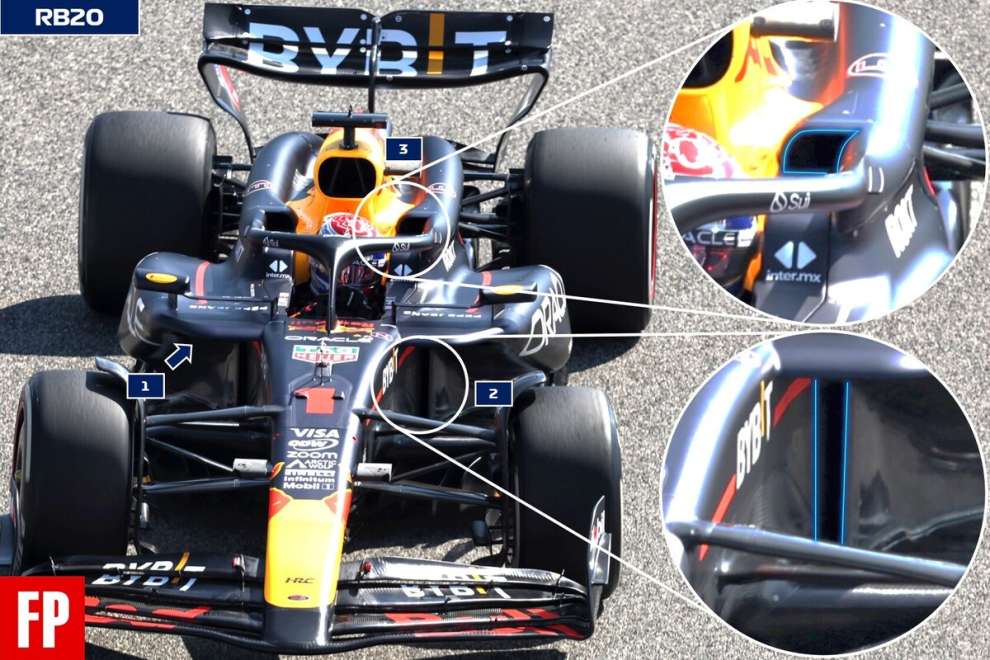

Aston Martin, mouths shut
Staying on the topic of cooling, the Silverstone team continues the development philosophy commented on the Red Bull 2023. The side air intakes are crushed to the point of unbelievability, maximizing the depth of the channel created in the girth. Such is the shape that the vents of the AMR24 draw air from above instead of frontally, making Aston Martin the car with the most extreme geometries in this direction.
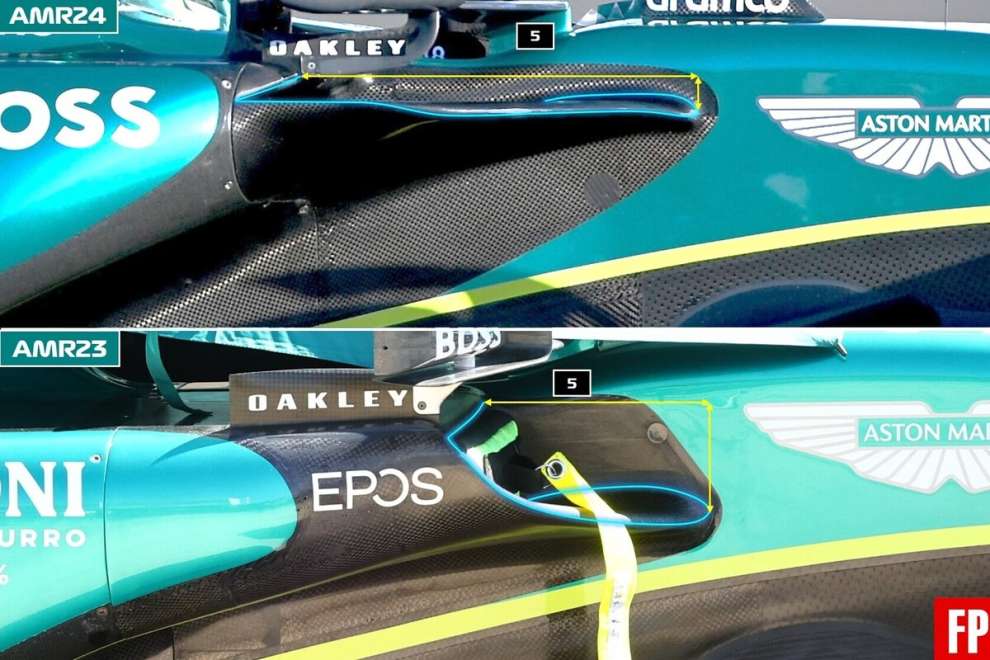
Mercedes, modular suspension
It was thought to be a joke in bad taste when, in the presentation renderings of the car, the W15 showed one arm too many in the front suspension. It was actually nothing more than a preview of an unprecedented solution studied in Brackley. In fact, the Silver Arrow features a modular front suspension, capable of changing the configuration of the rear arm of the lower triangle thanks to a removable panel. Mercedes thus ensures the possibility of regulating the level of anti-pitching, the kinematics that stabilizes the posture of the floor during braking, improving aerodynamic performance at the cost of a greater risk of locking. The team can now theoretically count on a tool that can be calibrated depending on the track, but above all it guarantees the freedom to develop the suspension geometry over the next two years without necessarily redoing the entire chassis.
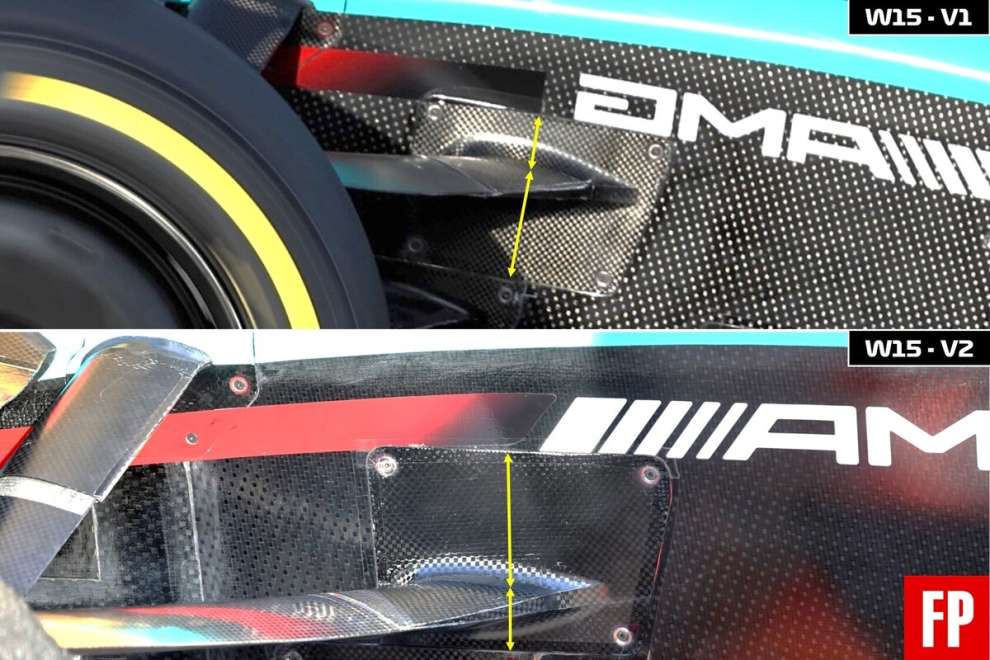
The Ferrari pull rod
Ferrari's unconventional choice, which continues with the pull-rod rear suspension, has raised doubts, deeming it better in terms of mechanical-aerodynamic compromise than the push-rod now dominant on the grid. However, the tie rod suspension of the new Rossa is completely different compared to the previous one. On the internal side, in fact, the Cavallino has shortened the gearbox and revolutionized the layout of the spring-shock absorber group, according to a new concept defined by the technical director Cardile as “innovative”. The suspension rod is thus set back compared to 2023, favoring the passage of the flows collected by the slide bellies and transporting a greater quantity of energy into the environment behind the diffuser.
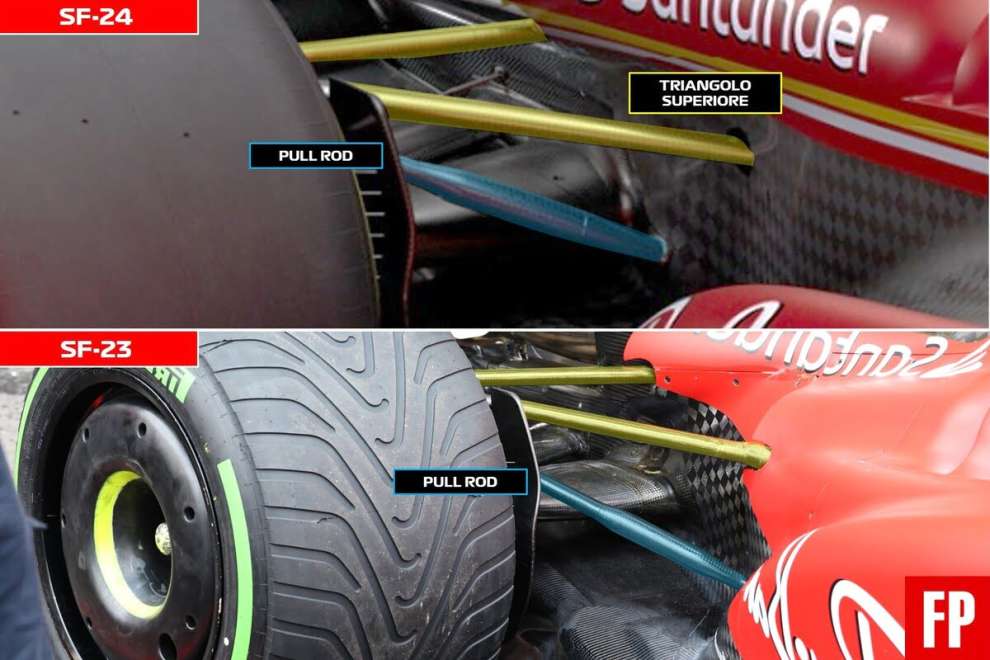
Mercedes and the extreme strut
In addition to the front one, the rear suspension from Mercedes is also decidedly aggressive. The W15 converts to the push-rod scheme, however reinterpreted in an original way compared to the most common grid geometries. The strut rod has a strong semi-lying inclination, bringing the suspension to work in a decidedly atypical way from a mechanical point of view. The lower rear arm is also moved back almost to the level of the impact structure, recalling a feature of the latest Mercedes world champions in 2020-2021. All to facilitate the passage of flows and improve the performance of the diffuser.
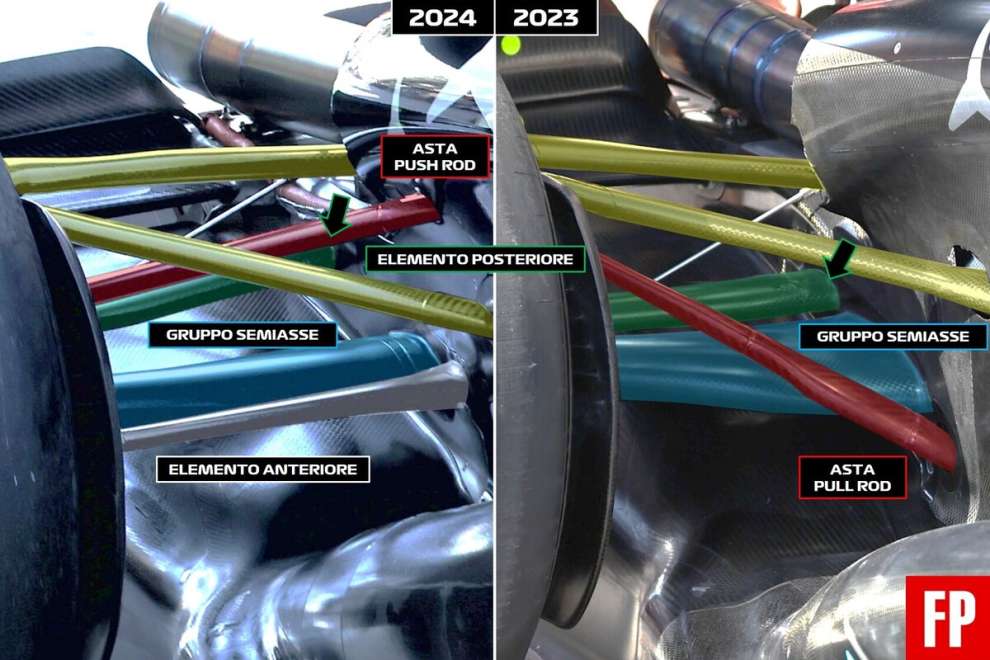

Williams bellies
Apparently the FW46 does not deviate from the latest trends of the moment. A more detailed look, however, shows how the Grove team does not fail to reinterpret the technical dictates of the competition. In fact, the team decided to position the cooling grids directly on the chutes of the bellies, an area that the opponents instead tend to keep clean to allow the flows to flow adhering to the surfaces. Williams, however, decides to sacrificing the cleanliness of the bodywork, using the low pressure along the belly to extract the hot air from under the hood. The result is more efficient cooling and less impact in terms of aerodynamic resistance.
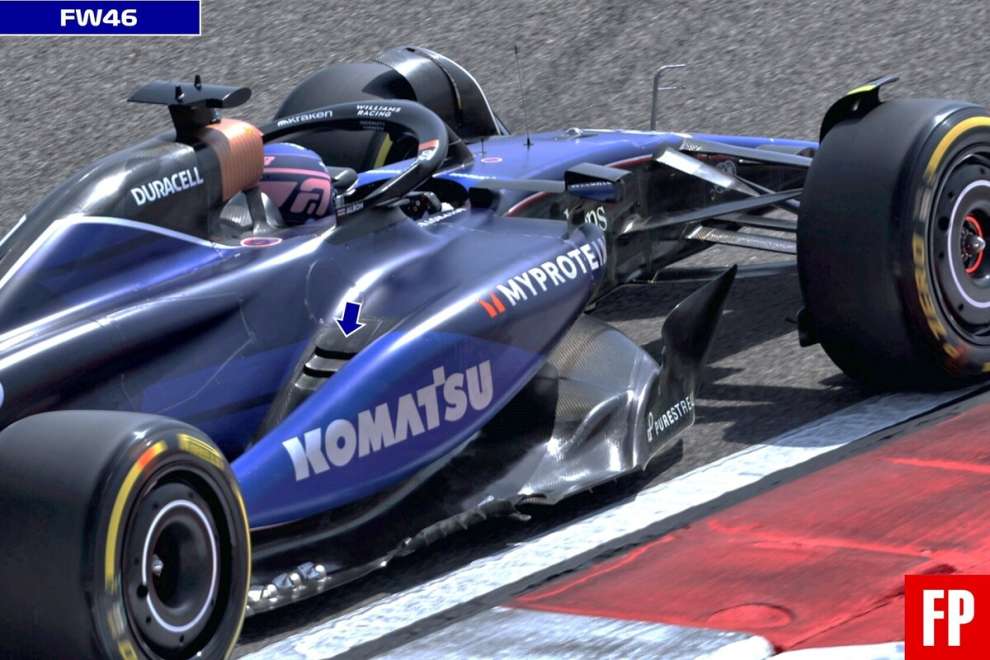
Red Bull V
Both the RB18 and the RB19 of recent seasons sported a V-shaped chassis at the front, a recurring feature in Adrian Newey's Formula 1, useful for managing turbulence from the front wheels and channeling the flows under the floor. The same principle returns to the 2023 Red Bull, however taken to a higher level. The inside of the nose of the RB20 shows how much the V profile has been accentuated compared to last championship.
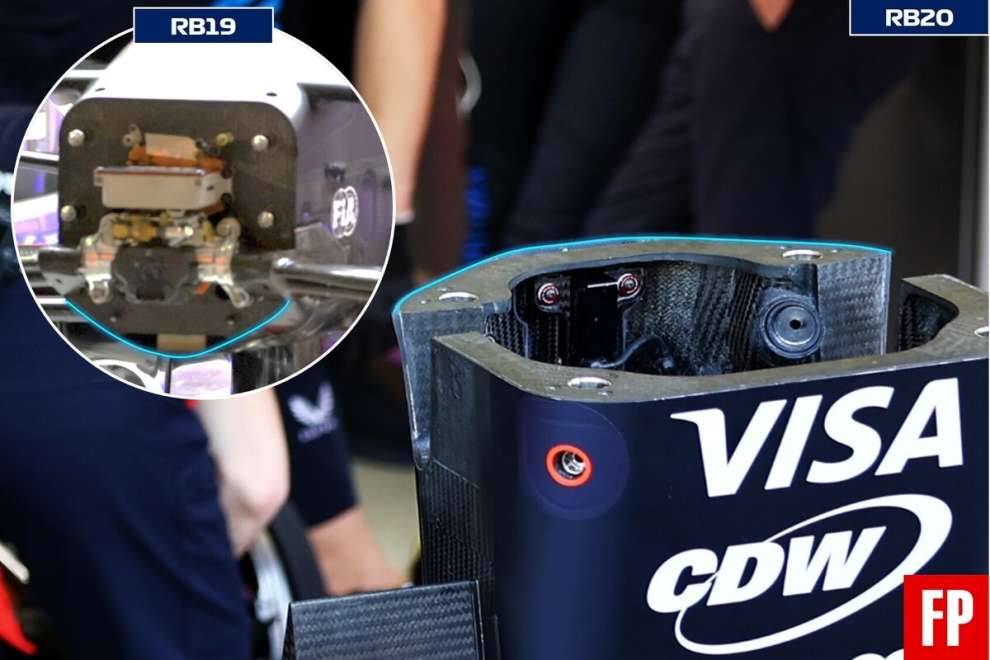
The Mercedes front wing
The Brackley team didn't fail to think of another original idea for their front wing, finding a gray area in the regulation. The regulation provides for total continuity in the profiles that make up the aileron, from the nose to the external bulkhead of the endplate. Mercedes, however, thins the innermost part of the last flap until it almost disappears, leaving just a thin strip of carbon for compliance with the regulation. The W15 thus favors the passage of flows to the sides of the nose, helping to manage the turbulence of the front wheels downstream, protecting the surface and improving performance.
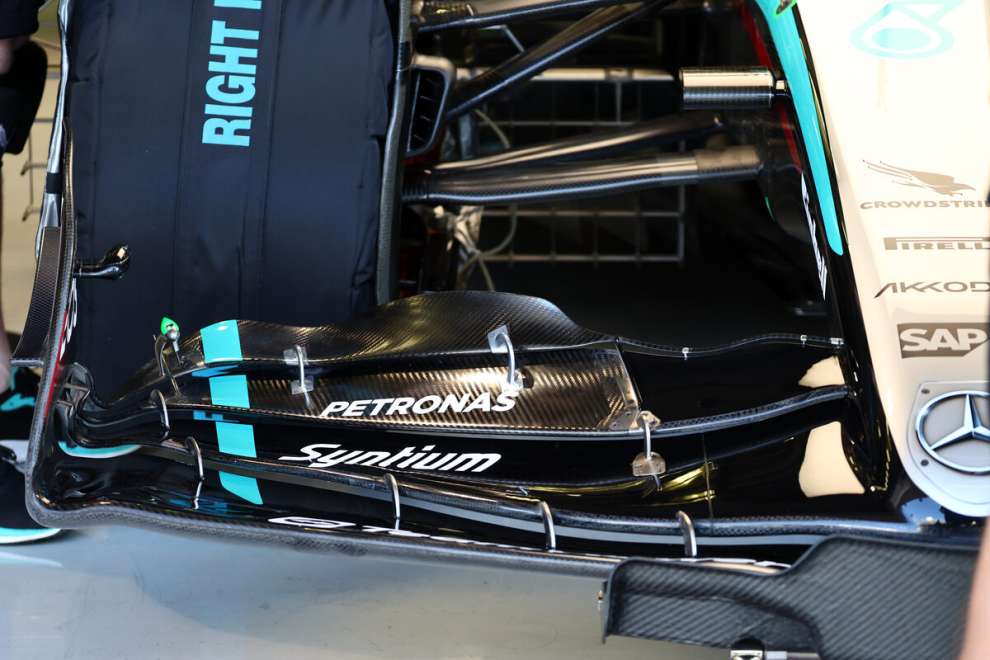
Alpine and duck bill
Even the team most in difficulty at the moment is worthy of attention. The A524 stands out for its particularly wide nose, from similar appearance to those of Formula 2 cars. Alpine's intention was to strengthen the front impact structure, so as to thin it and facilitate the circulation of flows under the car in the direction of the surface. A practice common to all teams, but which the Anglo-French team carries out in its own way.

What were initially thought to be the most restrictive technical regulations in history, in reality they continue to offer ideas and surprises every year. The credit also goes to the control volumes, which limit the dimensions of the components, but within which the designers enjoy wide freedom. However, it should be remembered that the most relevant solutions are actually hidden under the surface, but for those we will have to wait for the first shots taken from the cars rescued by the cranes on the track.
#Red #Bull #original #solutions #cars
